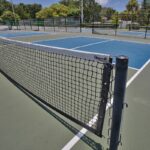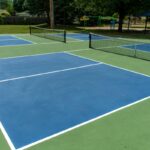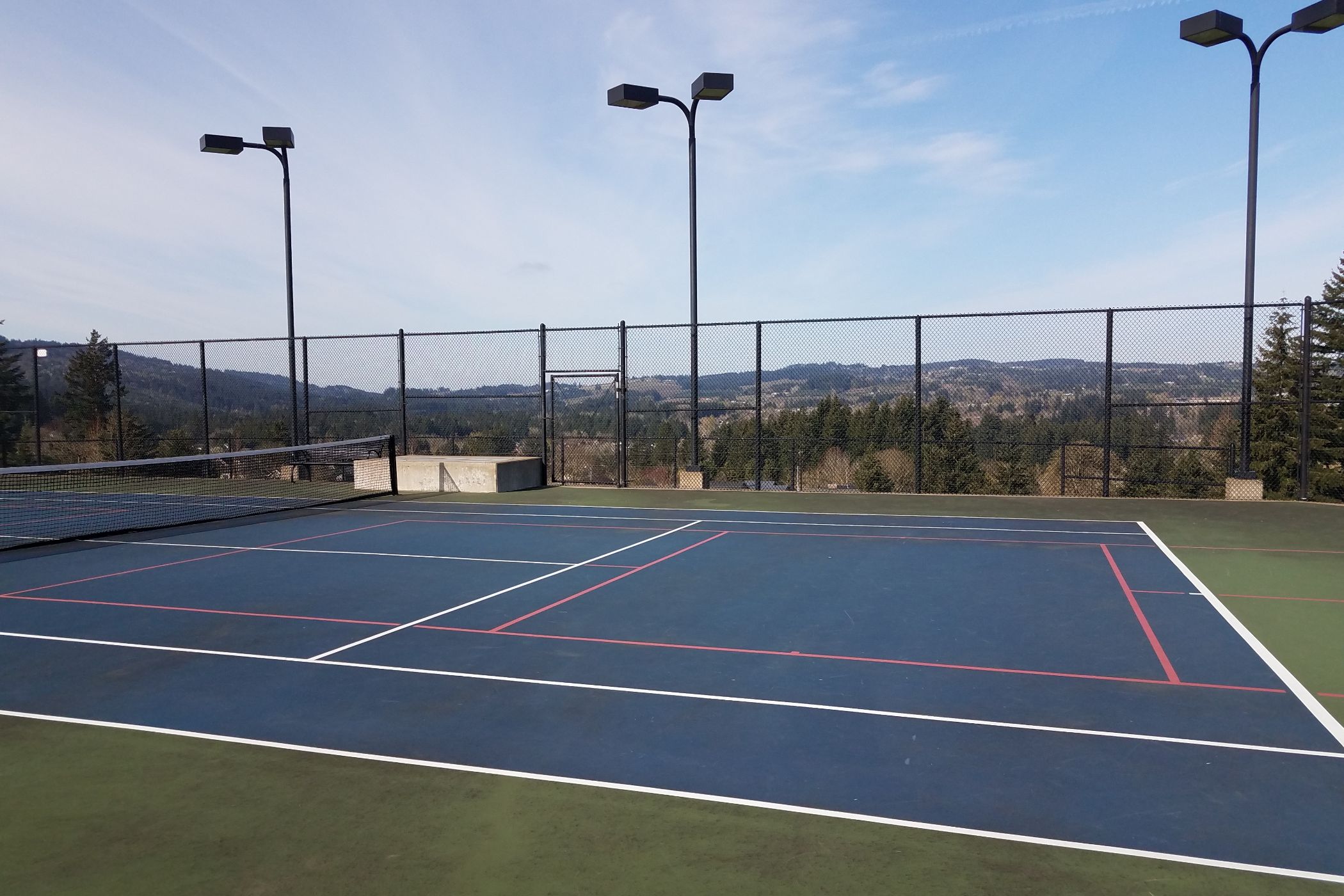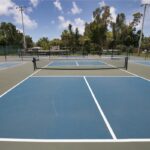One of the biggest factors that makes someone a good pickleball player is their movement, and specifically their awareness of their surroundings.
Pickleball is a game that requires a player to predict where and when someone is going to serve or return a ball, making it incredibly important to stay on your toes and know which areas of the court you should move into.
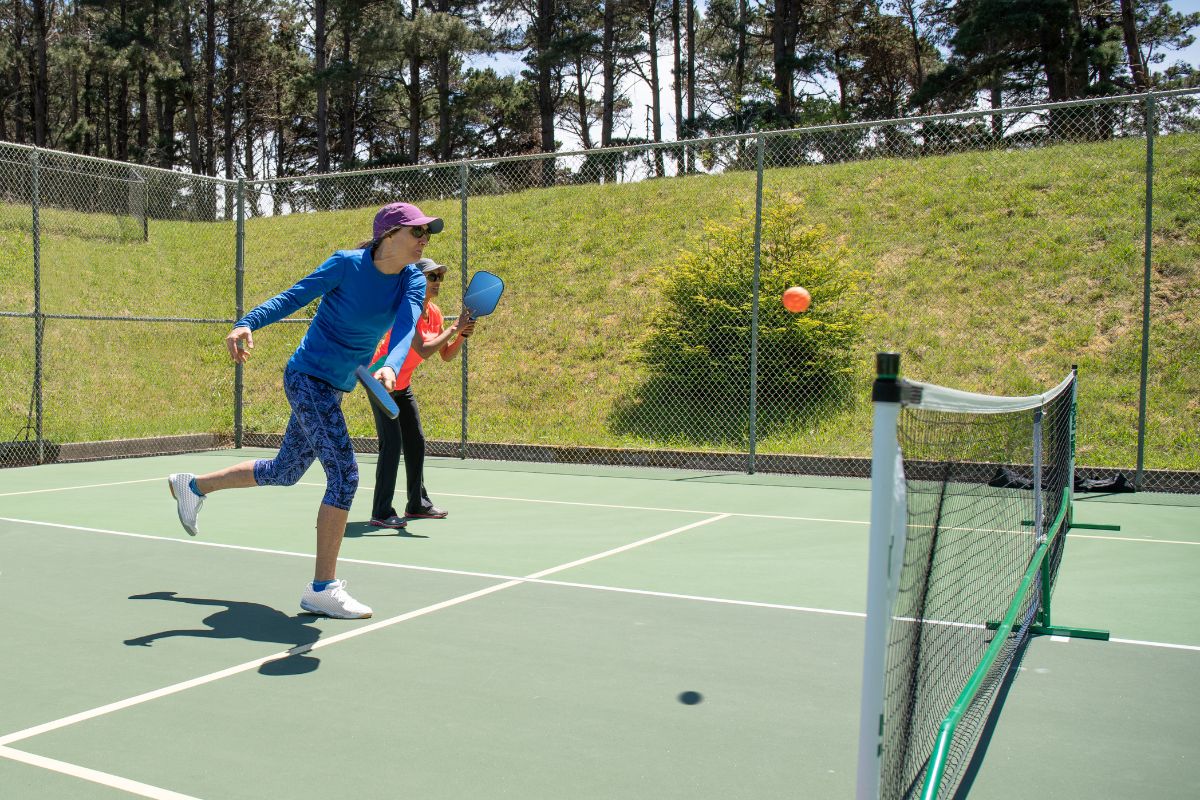
This does also mean that any pickleball player needs to know the rules of each area of the court, especially when it comes to the “non-volley zone”, which can initially seem a little confusing to beginner players just getting to grips with the basics of pickleball.
Here is a full rundown of what the non-volley zone actually means, and why you should always stay clear of it when trying to hit a ball first time.
Where Is The Non-Volley Zone?
The non-volley zone is the seven feet border that is closest to the net and the inside of the court.
This area can easily be identified by the large strip that separates it from the centreline which divides the deuce and ace playing areas.
It is therefore an open space adjacent to the net that is bordered off by an enclosed rectangle.
In many cases, the non-volley zone will be a different color from the surface of the rest of the playing area, such as a brick orange color or a lighter blue.
The non-volley zone is often called the “kitchen” by more experienced players.
Rules Of The Non-Volley Zone
The main rule to remember when playing pickleball is that when you’re anticipating to volley the ball, you should not be stepping into the non-volley zone at any time, otherwise you and your team will be punished.
If you are anticipating a volley after the ball has bounced twice, you will therefore need to move out of the non-volley zone immediately.
The only exception to this is players in wheelchairs who will be allowed to have their front wheels inside the zone while they volley, but not their back wheels so that they are never too close to the net.
Additionally, players are allowed to step into the non-volley zone if they are not volleying the ball, and a player will also be permitted to return the ball if their teammate is the one standing in the non-volley zone.
It will also not count as a violation if you return a ball in the non-volley zone that has already bounced, though this is usually very rare since the ball needs a lot more space for it to bounce across the court.
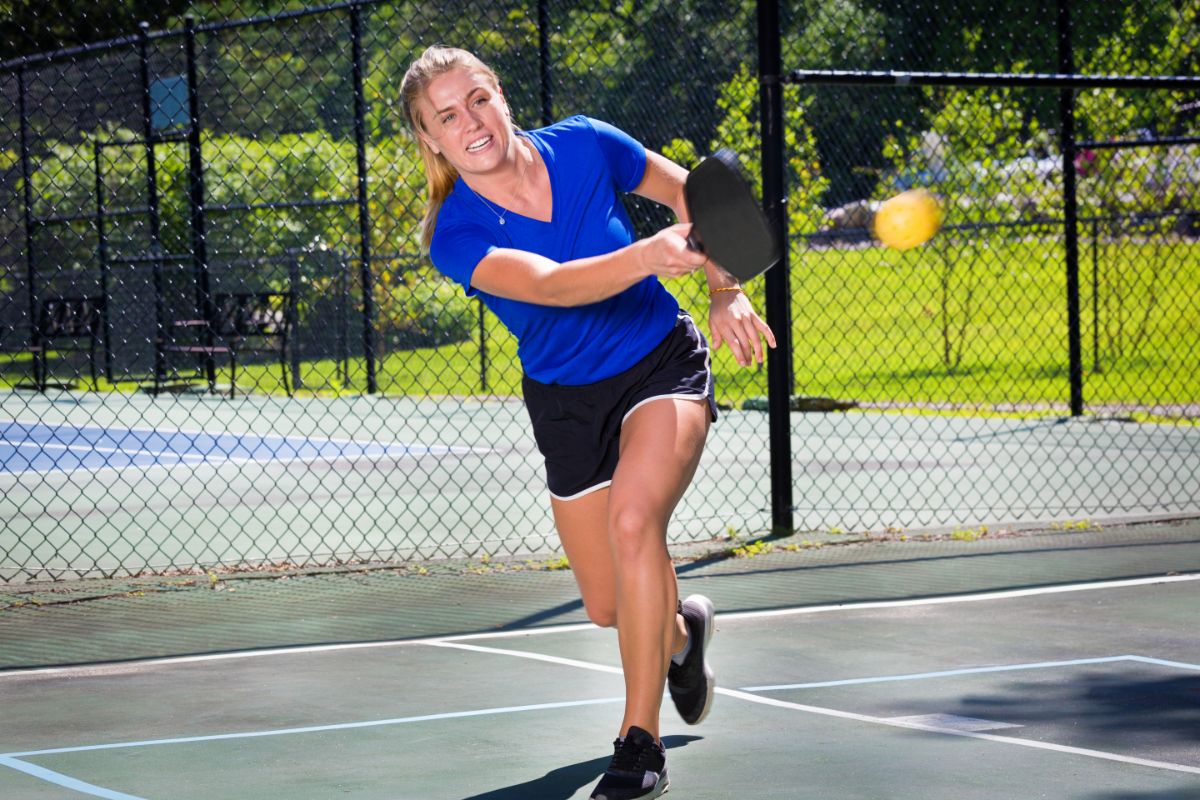
What Is The Non-Volley Zone Designed To Do?
In order to keep the game fair and running at a smooth pace, players are not allowed to step into the non-volley zone when hitting the ball first time since this would allow a player to perform a “smash” on a return, meaning that they hit the ball from near the net which is almost impossible to return back for the opposing players.
Because pickleball players need the ball to bounce on either side of the court once before they can volley, this zone therefore also ensures that the players are far enough back and that the ball has enough space to bounce, making it incredibly useful for beginners who are still getting used to their positioning.
The reason for the non-volley zone’s existence is therefore to make sure the ball crosses enough distance before being returned so that everyone has time to understand where the ball is going and how to strike it, rather than having to struggle to return a ball that is too close to the net.
Penalties For Stepping Into The Non-Volley Zone
If you disobey any of the rules regarding the non-volley zone and end up stepping into it during play when you are not permitted to, you will receive a fault as a penalty.
This will occur if you physically step into the zone during a volley, or if any part of the player’s paddle touches the zone.
A fault in pickleball will result in an automatic dead ball, and if the opposing team commits a fault, then the serving team will receive a point.
If the serving team commits a fault, then the serve is passed over to the opposition.
A player will also receive a fault if their momentum accidentally pushes their teammate into the non-volley zone.
Frequently Asked Questions
Can You Stay In The Non-Volley Zone During A Serve?
Since the rules state that a player can be anywhere on the court as long as the server is in their correct position, this does mean that you could technically remain in the non-volley zone when anticipating a serve, however, this would essentially be useless since the rules state that players must allow the ball to bounce once in each of their court’s before volleying can begin.
Therefore, because the serving team is going to try and bounce the ball, they will often give themselves a good amount of distance which is why players on the return will tend to stay further back, and since you won’t be allowed to volley the ball to return it since it is against the rules, a much better technique is to position yourself on either the ad or deuce side areas of the court.
Summary
In order to prevent a player from hitting a smash and the ball moving too fast to be able to return, the non-volley zone is put in place to ensure all players have a good amount of distance between them and their opponent, making the game much easier to follow rather than one team waiting next to the net to easily counter any of your strikes.
While you can step into the non-volley zone when maneuvering around the court, if the two bounces have occurred and volleying is allowed in the game, make sure to always remain outside of this zone if you are going to hit one.
- What Kind Of Ball Is Used In Pickleball? - July 13, 2023
- How Much Does It Cost To Build A Pickleball Court? - July 11, 2023
- When Do New Pickleball Rules Take Effect? - July 8, 2023

